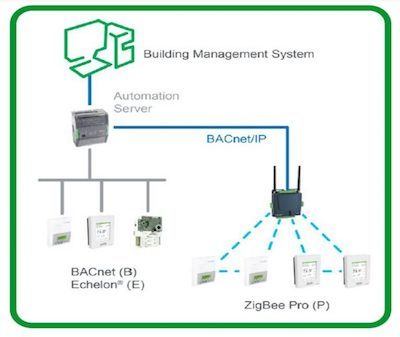Wireless Technology Changing the Playing Field for Building Owners
Wireless technology drives devices that we use every day – our smart phones, tablets, laptops, GPS, and more. How cool is that for us? Wireless technology can also mean better performance and energy savings for commercial buildings. How cool is that for those buildings?
Advanced wireless technology offers new choices for building controls and management. That’s important for making Building Management Systems (BMS) more affordable and energy-efficient. It’s also quite cool.
Research by ENERGY STAR indicates that commercial office buildings waste as much as 30% of their energy consumption. A BMS can help control that energy use; however, existing buildings and smaller enterprises sometimes struggle to justify investing in a BMS, in part because a retrofit wiring installation can be cost-prohibitive and disruptive. With a wireless building management solution, there are significantly fewer wires to run…typically no renovation…and minimal disruption to business.
Although wireless was once considered unreliable for building applications, the technology has overcome the earlier problems with interference and signal reach. Like I said, pretty cool stuff! The advantages of deploying modern wireless BMS solutions are significant: ease of installation, full scalability, and support for green initiatives. Also, wireless building systems can be secure and can use commercial, governmental, and military grade encryption with multilevel authentication.
The wireless standards used in the majority of commercial buildings worldwide are EnOcean® and ZigBee®. Building owners often find that the optimal solution for performance and energy use is a combination of wired and wireless EnOcean/ZigBee-based devices. For instance, a facility may rely on EnOcean products for lighting and room control, but use ZigBee-based devices for HVAC and network controllers.
For commercial building owners and operators, investigating the benefits of wireless solutions can pay off in reduced energy costs and improved building performance.







